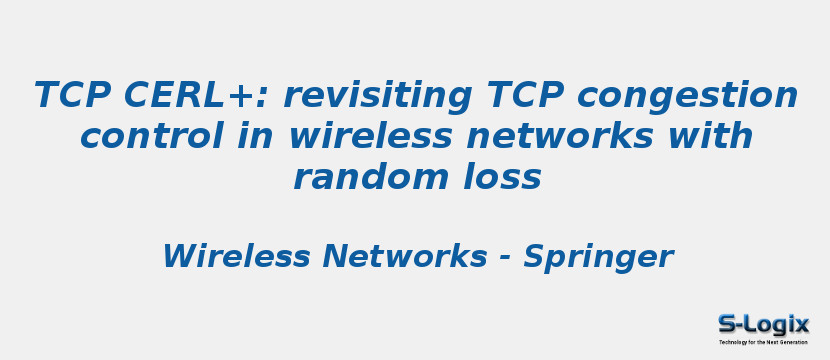Research Area: Wireless Sensor Networks
In this paper, we analyze the performance of wireless networks subject to random loss. In this regard, we revisit our TCP Congestion Control Enhancement for Random Loss (CERL) mechanism that has been introduced earlier in a previous study. We call our new developed TCP variant as CERL Plus (CERL+). TCP CERL+ is a modification of TCP Reno at sender-side. TCP CERL+ is a new generation that works similarly as TCP CERL but its main idea is to use a dynamic threshold in terms of RTT. In doing this, we employ the average RTT and its minimum measurements made over the connection to estimate the queue length of the bottleneck link. As a result, we can use this queue length to evaluate the congestion status and distinguish it from the random loss status. This in turn would not reduce the window size leading to enhance the performance of the proposed algorithm in the sense of increasing the amount of data transmission. Additionally, CERL+ alleviates the congestion in the bottleneck obviously. In this paper, we present simulation experiment for TCP CERL+ considering a two-way transmission assuming a heavy load and wide range of random loss rates compared to TCP NewReno, TCP New Jersey + , TCP mVeno, TCP Westwood + , TCP Cubic and TCP YeAh using the network simulation ns-2. Simulation results prove that CERL+ outperforms other TCP variants and achieves excellent throughput gain.
Keywords:
Author(s) Name: Taha Saedi & Hosam El-Ocla
Journal name: Wireless Networks
Conferrence name:
Publisher name: Springer
DOI: 10.1007/s11276-020-02459-0
Volume Information: volume 27, pages 423–440 (2021)
